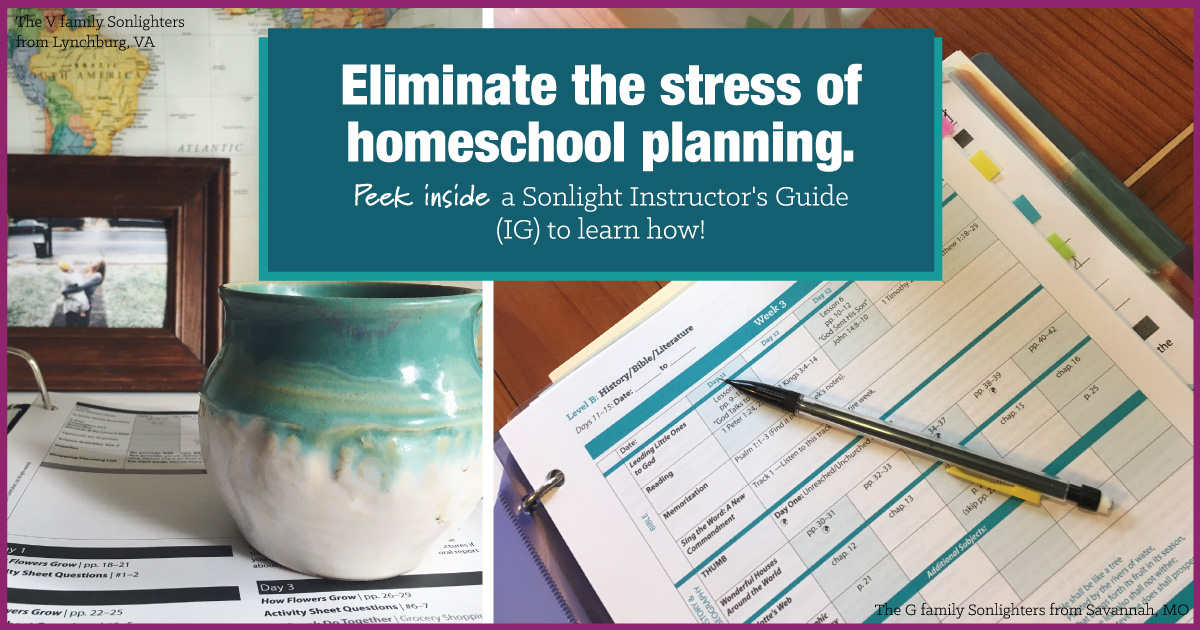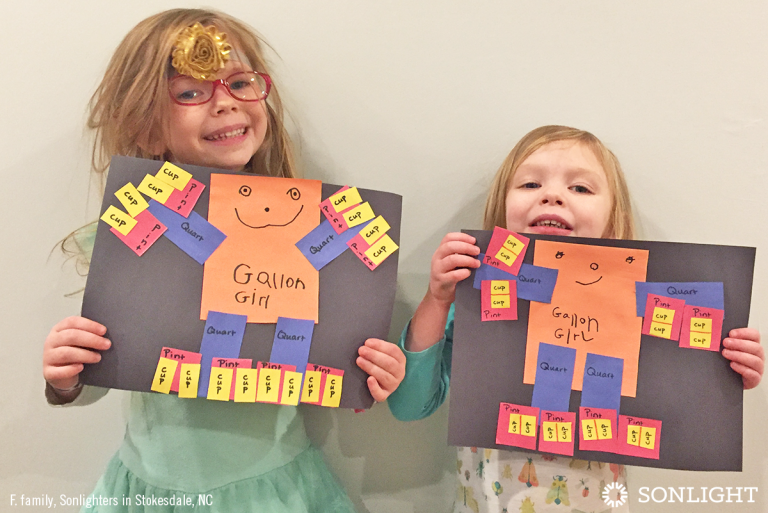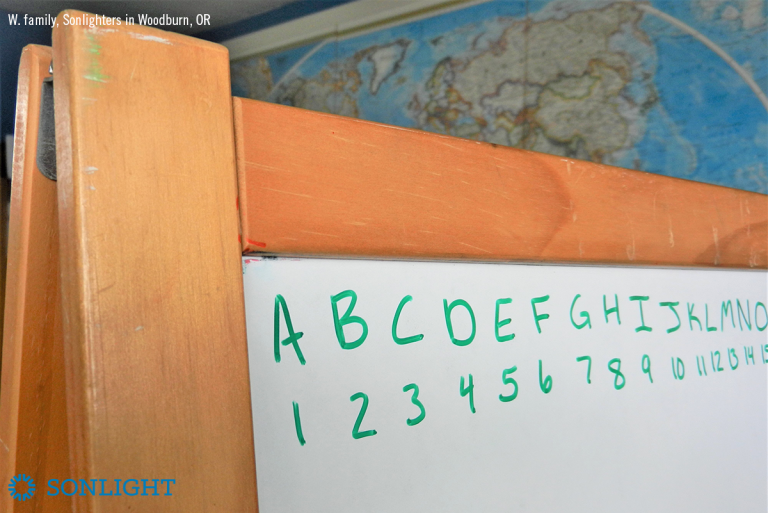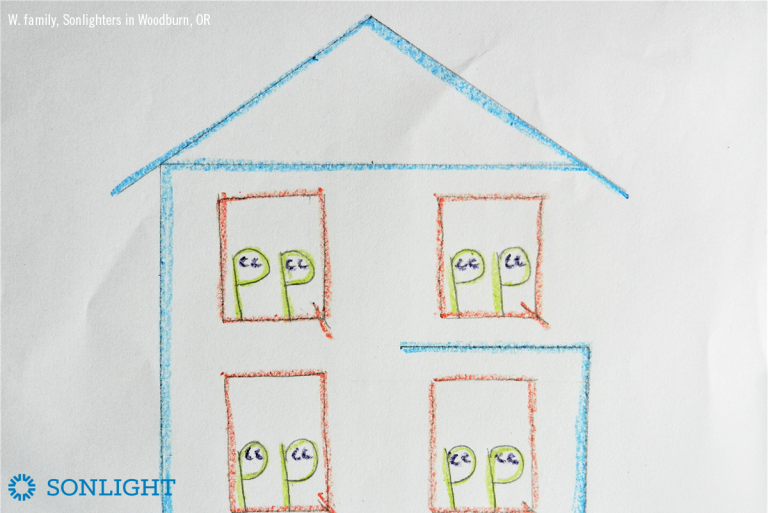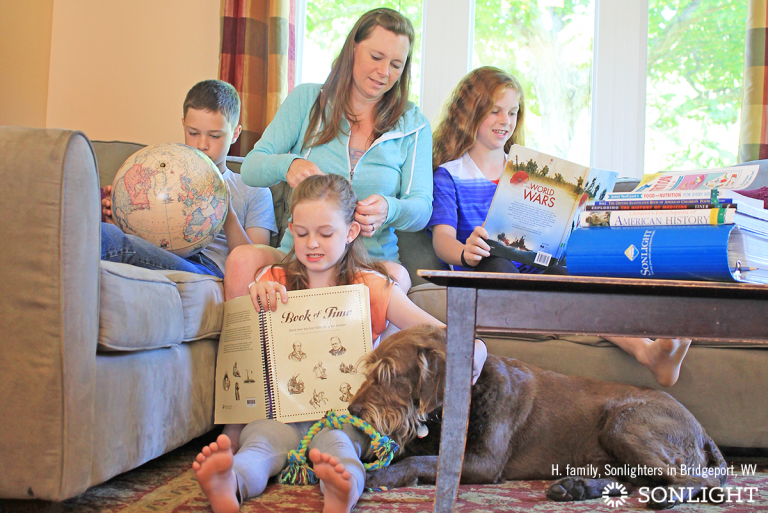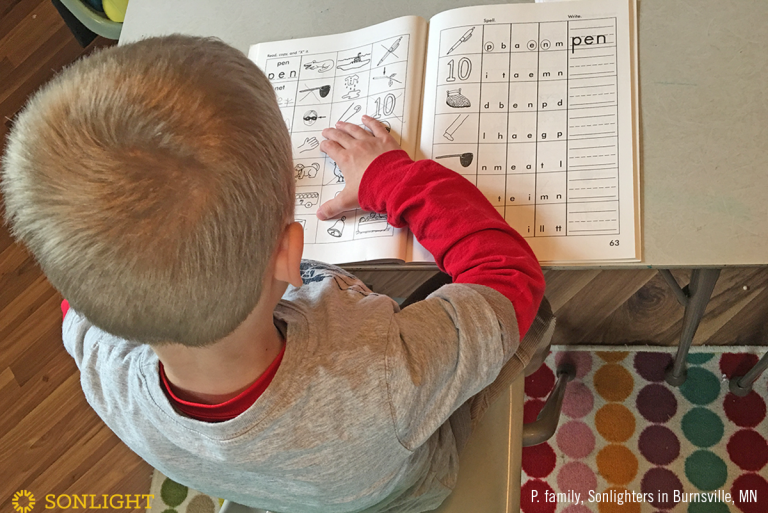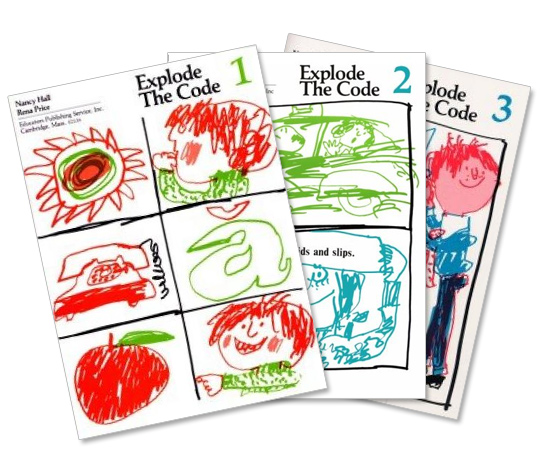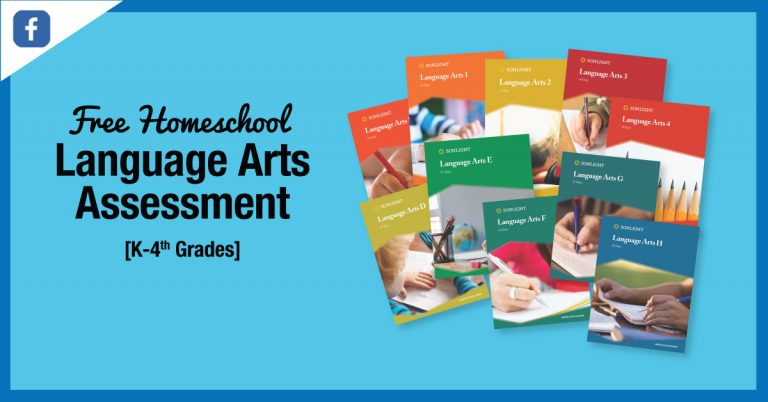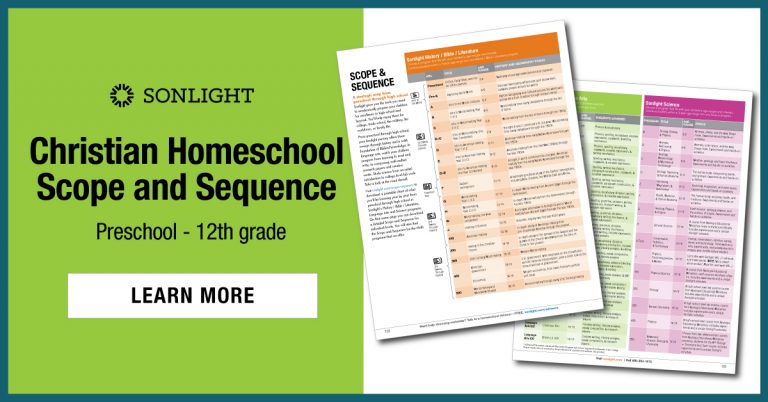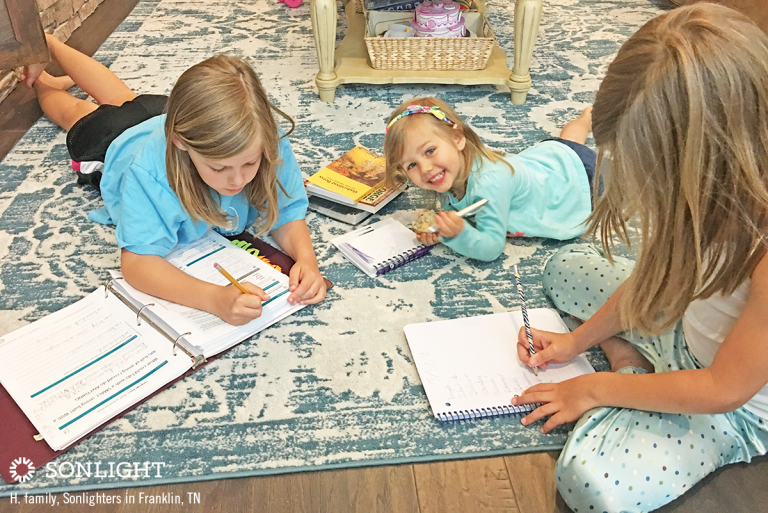
"Sonlight's LA program has boosted my girls' reading, spelling, and writing."
Erin H. of Franklin, TN
Copywork and dictation practices have been around for ages. We can even see examples of its importance in the Bible when men dedicated their lives to the cause of transcribing the Bible, word for word, so that more and more people could read and hear it.
I can remember learning about the Bible scribes. One person would stand in front of many scribes and read aloud from one copy of the Scriptures while many scribes would sit and carefully write out the words, being attentive to even the tiniest details. Oh, what a special job they had to further the gospel. Can you imagine? Being saturated in the Scriptures on a daily basis must have impacted every facet of their being.
Copywork and dictation are still alive and well even today. Many homeschoolers use it as a tool to teach grammar and composition. It only makes sense that, like the Bible scribes, being exposed to expertly written words can certainly impact a child’s communication skills. However, it can be tricky if you aren’t sure exactly how to teach from copywork passages.
There’s no need to fear. I am here to help, and I felt the exact same way when we started with Sonlight several years ago. Thankfully, my Instructor’s Guides have held my hand over the years and taught me how to pull out important information from great passages of literature. I’ve also learned some helpful tricks on my own to help make copywork and dictation a routine part of our homeschool routine.
1. Choose a Passage
If you are a Sonlighter, you’re in luck! Kick back and relax because Sonlight takes care of this step for you. If not, you’ll need to choose a meaty passage from whatever book you are currently reading. You might choose the passage because it includes a certain grammar skill, or you may choose an inspiring passage and then examine it. You’ll want to make sure that this passage is, as Charlotte Mason might say, “free of twaddle” and models excellent composition skills.
You’ll want to choose a passage that is of an appropriate length for your child. In the early years, it may only be a sentence or two. In the later elementary years, you’ll want to increase up to a paragraph. In the middle school years, you can include a little more than a paragraph if your child can handle it. The only caution here is to make sure you don’t exhaust your child. That is not the purpose of copywork and dictation, so be sure to choose a passage that is challenging but not out of reach for your child’s level.
2. Read & Discuss the Passage
First read the passage to your child. Then let the child read the passage to you. Discuss the meaning of the passage with your child. You may even think about where you heard it in the read aloud and consider the context.
3. Examine the Passage for Content, Usage and Vocabulary
Give your child a highlighter and have them highlight any places where they may struggle with the word choice, vocabulary, or usage. They may ask questions such as
- Why did the author use that word?
- Why did the author write it that way?
- What does that word mean?
Help your child find the answers to their questions. Look up words in the dictionary, and discuss why the author may have chosen the word may instead of the word can.
For a child who just can’t seem to find something to highlight, you may say, “I would like for you to highlight three words in the passage that you think others may not understand.”
4. Examine the Passage for Grammar & Spelling
Take your child on a grammar and mechanics walk through the passage, noting the punctuation, capitalization, and any interesting grammatical structures.
Then choose just one skill to hone in on. In the early years, it might be periods or capital letters. In the later years, you may decide to focus on clauses and parts of speech. Once you have determined the focus skill, point it out to your child and talk about it extensively. Discuss what it means, why the author chose it, and how it fits in the sentence. Don’t worry! If you’re a Sonlighter, your Instructor’s Guide will help you!
Again, a highlighter can be a valuable tool to help. My son recently had a lesson on primary and secondary support, so we used different colors of highlighters to show the primary and secondary support sentences in the copywork passage. It was an effective exercise as he was then able to see the lack of support sentences in his own writing.
5. Identify and Discuss Literary Elements
You’ll want to then point out any literary elements. There are several different types of literary elements, but these are some of the more common examples:
- Allusion
- Diction
- Euphemism.
- Foreshadowing
- Imagery
- Metaphor/Simile
- Personification
You might choose a specific color highlighter to use to identify literary elements in copywork. Discuss the literary element, and talk about other places you’ve seen it appear in literature. You may also model a response to the passage by saying, “I love the author’s use of foreshadowing here. It really clues me in to what may happen and gives me an opportunity to make a prediction about what will happen to the character.”
6. Copy the Passage
At this point, the original copy is usually pretty marked up, so I like to give my child a fresh copy of the passage. Then, I stress my expectations. For copywork, the focus is attention to detail, so I make sure that they know that I will be looking for penmanship, correct spacing, and correct use of punctuation and spelling. Basically, I will expect a neat, perfect copy of the passage. I remind them to take their time and really think about each little piece of the passage.
This is the point where you will need to make a decision for your child. Some children can write the entire passage daily. This is a great thing and should be encouraged. Some will not, and that is alright too. However, your child does need daily exposure to the passage. So even if you do not require them to copy the entire passage each day, they will need to do something with it every day.
For those who are not up for daily copywork, you may break up the copywork assignment, having them copy one sentence per day. Or you may break up the examination of the passage over the course of a week. You might examine the passage for content and vocabulary on Monday, the grammar and spelling on Tuesday, and literary elements on Wednesday. You may even choose to simply read over the passage daily. It is most certainly up to you how you require your child to interact with the passage, but again, daily exposure is your goal.
7. Self-Correction
Once your child has copied the passage, have them correct their work against the original. Let them know that they will have to correct any mistakes they made, and of course, you will correct the final draft of the copywork. This is a very useful step in copywork, because they are looking at their work from a different perspective, and that will provide another layer of understanding.
8. Dictation
On the last day of the week, sit down with your child and dictate the passage as they write or type it. Stress the importance of correct spelling and grammar. Read the passage carefully, making sure to read the punctuation. Ideally, you want to only repeat once.
If you like, before dictation day, you may consider letting your child read the passage to you while you write down the dictation. This helps them to also learn to read fluently, and they usually get a real kick out of trading places with the teacher!
When finished, have your child check and correct his work. If you want to take it to an even higher level, you may give him a quiz and have him pick out and label the literary elements present in the passage and define the vocabulary. Keep in mind, however, that is not necessary.
The idea behind copywork and dictation is that repeated exposure to expert composition will in turn, teach your child to compose with expertise. The practice of copywork and dictation is similar to an internship. Your child is an apprentice to the great writers of yesterday and today. Why would you not utilize the expertise at your fingertips?
If this list overwhelms you, don’t worry. This is not a weekly requirement. Sometimes, I do a great job at examining copywork, and some weeks, I literally hand the passage to my kids and say, “Copy this.” I usually aim for a close examination of the passage every other week. Also your Sonlight Instructor’s Guide will be so very valuable in this process. Trust the notes you find there, and let them be your guide. You don’t have to reinvent the wheel when it comes to copywork.
I think that when we consider the Bible scribes, we can see how important their work was. It must have felt tedious at the time, but they made the very first copies of the Scriptures with their own hands. What an honor! While I certainly can’t promise that every copywork passage will be as live-giving and life-changing as the Scriptures, I can say with confidence that spending time with expert literature will, without a doubt, influence your child’s writing positively. It will give them the tools they need to one day be able to effectively communicate their thoughts in the written word as well. That is the goal of every language arts curriculum, and that is well worth the time and effort.


